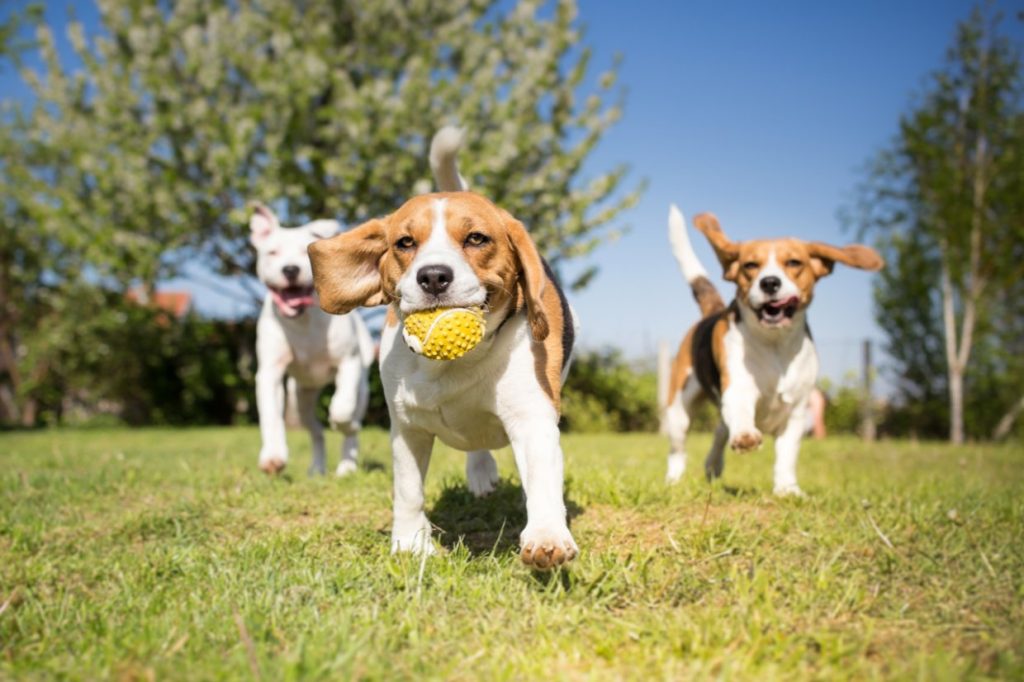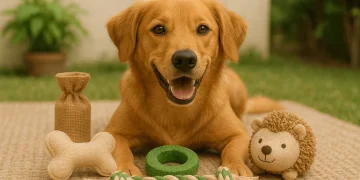Introduction:
Pet training is an essential part of responsible pet ownership. Whether you are teaching your dog basic commands like “sit” and “stay,” or trying to correct undesirable behaviors like excessive barking or scratching, one of the most debated topics among pet owners and trainers is the method of reinforcement: reward-based training versus punishment-based training.
Many pet owners wonder which of these two methods is more effective in encouraging good behavior and correcting bad habits. In this article, we will explore the science behind both reward and punishment in pet training, the pros and cons of each, and how to use them effectively to foster a well-behaved, happy pet.
1. Understanding Reward-Based Training
Reward-based training, often referred to as positive reinforcement, involves encouraging good behavior by offering rewards. These rewards can be treats, praise, toys, or anything else that your pet finds motivating. The fundamental idea behind positive reinforcement is that behaviors that are rewarded are more likely to be repeated.
The Science Behind Reward-Based Training
Positive reinforcement is grounded in the principles of operant conditioning, a type of learning where an animal’s behavior is modified by the consequences that follow it. In this case, when your pet performs a desired behavior and receives a reward, they learn to associate the behavior with something positive, increasing the likelihood of it occurring again.
Examples of Positive Reinforcement:
- Treats: Offering your dog a small treat when they successfully perform a command like “sit” or “come.”
- Praise: Verbal praise or petting when your cat uses the litter box or does something you’ve taught them to do.
- Play: Engaging in a favorite game like fetch or tug-of-war after your dog successfully follows a command.
Benefits of Reward-Based Training:
- Builds a Positive Bond: Reward-based training strengthens the relationship between you and your pet, as it focuses on reinforcing positive behaviors and rewarding your pet for their success.
- Encourages Motivation: Pets are often highly motivated by rewards, and this keeps them engaged and excited about training.
- Effective for Long-Term Behavior: Positive reinforcement helps your pet learn the connection between behavior and reward, which is often more sustainable in the long run.
- No Fear or Aggression: Unlike punishment, which can lead to fear and aggression, reward-based training fosters a calm, positive environment for your pet.
Challenges of Reward-Based Training:
- Consistency is Key: To be effective, rewards must be given consistently when your pet exhibits the desired behavior. If you don’t reward them regularly, the behavior may not be reinforced.
- Overfeeding Risk: If you rely too much on food rewards, your pet may become overweight. You can avoid this by using low-calorie treats or other types of rewards, such as praise or play.
- Requires Patience: Positive reinforcement requires time and patience. Your pet may not learn immediately, and some behaviors may take longer to shape.
2. Understanding Punishment-Based Training
Punishment-based training, also known as negative reinforcement or simply using punishment, involves discouraging unwanted behaviors by imposing an unpleasant consequence. The goal of punishment is to reduce the frequency of undesirable behavior by introducing something unpleasant whenever the behavior occurs.
The Science Behind Punishment-Based Training
Punishment is also grounded in operant conditioning but in the opposite direction. In this case, the animal learns that certain behaviors lead to unpleasant consequences, which decreases the likelihood that they will repeat those behaviors.
However, it’s important to note that punishment is typically less effective than positive reinforcement for modifying behavior. Punishment may stop the behavior in the short term, but it doesn’t necessarily teach the pet the desired behavior.
Examples of Punishment-Based Training:
- Scolding: Yelling at your dog when they jump on the furniture.
- Time-Out: Removing your pet from a situation or activity when they exhibit an undesirable behavior.
- Spray Bottles: Spraying your cat with water when they scratch furniture or jump onto counters.
Benefits of Punishment-Based Training:
- Immediate Results: Punishment can sometimes stop unwanted behavior quickly. For example, a cat may stop jumping on the counter if they are sprayed with water every time they do it.
- Increases Awareness: In certain situations, punishment can alert your pet that a particular behavior is not acceptable, which can work in the short term.
Challenges of Punishment-Based Training:
- Creates Fear or Anxiety: Pets who are punished may develop fear or anxiety around the situation or the person administering the punishment. For example, a dog may become fearful of their owner if they are constantly scolded.
- May Lead to Aggression: If the punishment is too harsh, or if the pet feels cornered or threatened, they may react with aggression.
- Doesn’t Teach Alternative Behaviors: While punishment can stop a behavior temporarily, it doesn’t teach your pet what they should be doing instead. For instance, punishing a dog for chewing on shoes doesn’t show them what appropriate chewing toys look like.
- Damages the Relationship: Continuous punishment can undermine the trust and bond between you and your pet, leading to a strained relationship.

3. Which Is More Effective: Rewards or Punishments?
When comparing rewards and punishments in training, positive reinforcement has been shown to be far more effective in fostering long-term good behavior in pets.
Why Positive Reinforcement Works Better:
- Positive Reinforcement Builds Trust: Rewarding your pet builds trust and fosters a bond. Punishment, on the other hand, can make your pet fearful or anxious, damaging the relationship.
- Reinforces the Desired Behavior: Positive reinforcement teaches your pet exactly what you want them to do, while punishment only discourages bad behaviors without providing a clear alternative.
- Creates Motivation: Pets are more motivated when they understand that doing something correctly will result in rewards. Punishment doesn’t offer motivation for good behavior—it just discourages bad behavior.
However, a Balanced Approach Can Be Useful:
While positive reinforcement should always be the primary method, there may be times when mild punishment (e.g., a firm “no” or a time-out) can be useful, especially if the pet is engaging in dangerous or harmful behaviors. It is essential, however, to ensure that the punishment is not harsh and doesn’t cause harm or distress to the pet.
For example, if your dog is about to chew on something dangerous, a firm “no” may be appropriate. However, following this up immediately with a redirection to a chew toy and positive reinforcement for choosing the right item is more beneficial than simply scolding your dog.
4. How to Use Rewards and Punishments Effectively
To maximize the effectiveness of pet training, it’s important to know how to balance rewards and mild forms of punishment:
a. Focus on Positive Reinforcement
- Use treats, praise, or toys to reward your pet for following commands or exhibiting desirable behavior.
- Be consistent with your rewards, offering them immediately after your pet performs the behavior.
- Gradually reduce the frequency of rewards once the behavior is learned, but continue to offer praise.
b. Use Punishment Sparingly and Constructively
- Use punishment only in situations where the pet’s behavior is potentially harmful or dangerous (e.g., chewing electrical cords, aggression).
- Ensure that punishment is not violent or excessively harsh. A firm “no” or removing your pet from a situation is typically sufficient.
- Always follow punishment with an opportunity to practice the desired behavior, and reward it when your pet does the right thing.
5. Conclusion
In pet training, reward-based training (positive reinforcement) is generally the most effective and humane approach. It not only encourages good behavior but also strengthens the bond between you and your pet. While punishment-based training may work in certain situations, it often comes with risks, including anxiety, fear, and aggression. By focusing on positive reinforcement, you can create a safe, trusting, and rewarding training environment that fosters your pet’s well-being and long-term behavioral success.
A balanced approach, where rewards are the primary tool and punishment is used minimally and constructively, will help you train your pet effectively and ethically.























































